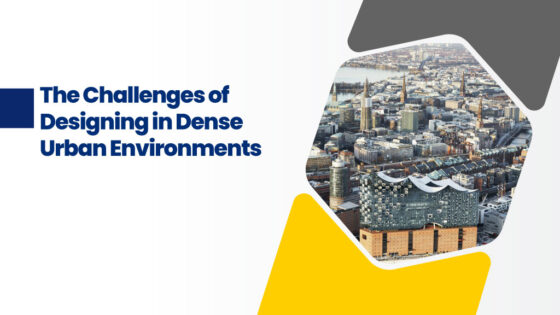Nation-building describes the process of developing a national identity using state institutions. Its purpose is to unite people from societies of different origins, histories, languages, cultures, and religions within the boundaries of the autonomous state and into a unified constitutional and legal order. The universal definition of architecture is “The Art and Science of Designing and Building Structures.” Architects, as designers, build environments by providing the most important human need: shelter. The stability of a nation or society represents the well-being, safety, and spatial efficiency of a system. Architects apply social reason to enhance the efficiency of their buildings by looking back, smiling, celebrating, or rejoicing in the sweetness of their land.
Architects Follow National Regulations and Culture
“Conscious effort and sensitivity are the demands of nature,” and this concept must also be followed by architects who contribute to national stability. The role of architect is to find ways to minimise the negative environmental impact of buildings and structures and increase their efficiency. Resource utilisation is essential not only to the nation and its well-being but also to the survival of future generations. Architects construct buildings as part of the overall environment rather than designing them as objects. They may not have a self-determined position in relation to their environment, but they are familiar with the concepts of boundaries, mapping, and public and private space because the built environment is part of their daily lives. In this mission to build a nation, the architect must not forget the heritage and culture of society. In order to integrate national identity into new concepts, they must never forget the legacy of the people’s past. The built environment promotes self-identity and pride in the community and the strength and resilience of a culture, which defines the country as unique and innovative. Architecture is therefore related to the socio-political conception of a country and helps define its cultural identity.
Role of Architecture in Nation-Building
The implications of the architect’s role in providing spatial solutions and structural techniques to reduce resource consumption without sacrificing comfort and safety can propel the nation toward stability. Architects regulate many areas of the construction industry by influencing the design and construction of all structures and by providing standards and rules. It must be able to form a nation composed of various groups, which he can identify and integrate as part of a united society under one banner. In this way, he helps promote unity through architecture.
Example for Promoting Unity Through Architecture
The National Library is a good example of explaining the concept of the role of architecture in nation-building. A library is a place that takes care of the responsibility of acquiring, processing, and disseminating information to meet the educational, recreational, social, political, and economic needs of the community. The National Library plays an important role in society by classifying the social, cultural, and political development of a nation.
The “Book Stop Pop-up Library” project is the vision of the Philippine architecture office “WTA Architecture + Design Studio.” The project focuses on the core vision of the library as a place to read books, a place for human interaction, and a platform for educational growth. The Book Stop is working to rethink the physical architecture and distribution system of libraries. It emphasises ease of access and refrains from trying to reinvent the purpose of libraries.
2. Promoting information literacy
The project maps various public spaces in the city with a high volume of foot traffic. This serves as a redistribution site for old books, allowing the open and free sharing or transfer of ideas from one person to another. That’s the way to bring people together. Such creations help architects develop a positive culture in society.
Considering this example, we can see how creating a small pocket place in a city brings people of different backgrounds together.
Conclusion
Architecture is therefore an indicator of democracy. The coexistence of pluralistic cultures that respect each other’s identity, dignity, freedom, and civic participation in the decision-making process is an essential norm of all forms of democracy. Each stage of a construction project must be carried out by a skilled architect. Start with majoring in degree courses in b planning college and let creativity makes you a demanding architect.
Blog by,
Praveena P






